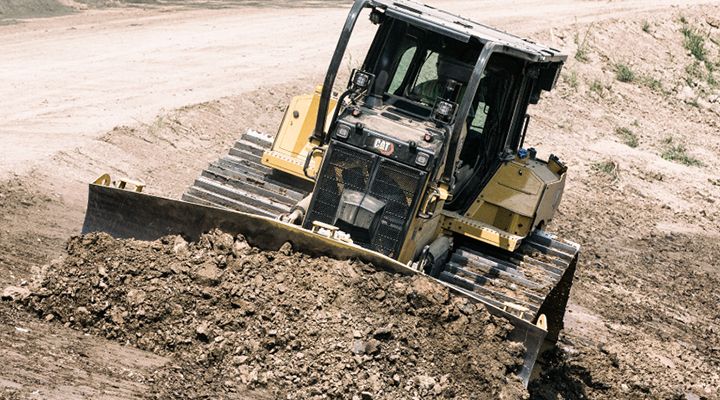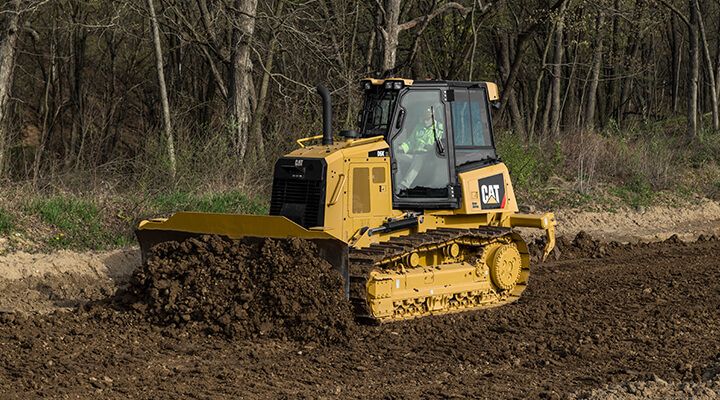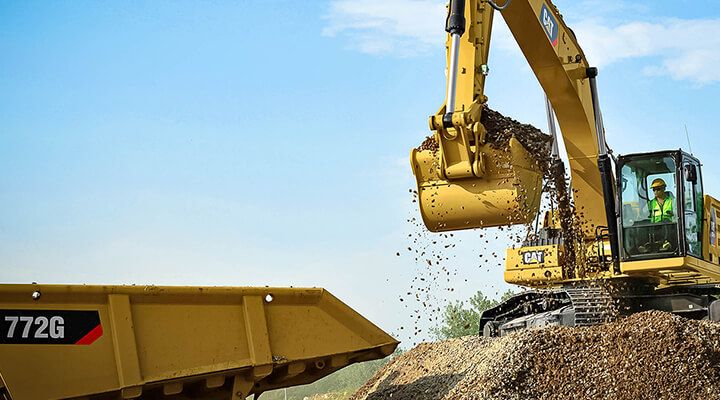

Sign In
Welcome! Sign In to personalize your Cat.com experience
If you already have an existing account with another Cat App, you can use the same account to sign in here
Register Now
One Account. All of Cat.
Your Caterpillar account is the single account you use to log in to select services and applications we offer. Shop for parts and machines online, manage your fleet, go mobile, and more.
Account Information
Site Settings
Security
Tech watch
Autonomous Construction Equipment: Site Communications
As remote controlled and autonomous construction equipment comes into wider use, construction site communications will play a vital role. Caterpillar’s Vijay Ramasamy, chief engineer for Construction Industries Remote Control & Autonomy, is watching the development of mobile jobsite data networks. Here’s how he sees them taking shape.
Estimated read time: 5 minutes
Data Communications For Construction Jobsites
Ready or not, automated equipment systems are coming to construction jobsites. Remote controlled (RC) machines will let operators work from hundreds of feet or thousands of miles away. Semi-autonomous systems will take over key tasks from human operators. Fully autonomous machines will complete tasks all on their own.
And all these autonomous systems will run on the same thing: Data.
A robust construction site communications network is essential — with data connections both on and off the site — because these equipment systems need to:
- Feed video and machine data to remote operators
- Communicate locations and status between machines
- Share bandwidth with subcontractors
- Provide production information to the general contractor
- Do it all reliably and largely instantaneously
So, how do you create a data and site communications network for your jobsite that can meet all those challenges — without breaking the bank?
“What do all automated MACHINE systems need? Data. With reliable communications connections on and off the site.”
Dynamic Jobsites Pose Challenges
Automated equipment has already proven itself on mine sites around the world. Fully-autonomous mining haul trucks have been working safely and productively for close to a decade. But the much more dynamic conditions of a construction jobsite pose a number of very different challenges.
Think about what goes on around a typical construction job: All kinds of machines tackle different jobs every day. Subcontractors move on and off the site, sometimes unannounced. The site itself changes, from clearing and rough grading to excavation and finished work.
And when the project is completed, everything needs to be packed up and moved. Of course, the next jobsite may look very different. Maybe it’s in a tight urban location instead of a remote area. Maybe the equipment fleet is much larger with a different mix of machine types.
That’s a far cry from the long-term consistency of a mine site. Miners may work at a single location for decades, so they can afford to make a substantial investment in permanent site infrastructure.
For construction contractors, site infrastructure will need three unique qualities:
1. Modularity — It must be reconfigurable for different fleets, jobs and site conditions.
2. Portability — It has to be able to move easily between jobs as projects are completed.
3. Economy — It will need to require a modest capital investment compared with mine-site data infrastructure.
Point-To-Point Is The Starting Point
The good news is that some autonomous construction equipment systems require little or no communications infrastructure. A large portion of the operational intelligence will be built into the equipment, rather than off-boarded to a back office.
For example, an on-site operator can control an RC excavator from a portable, stand-up console. In this case, the operator will rely on automated “assist” features to simplify machine control—automatic blade control for dozers, for example.
Or an operator might work from inside a dozer while an autonomous compactor works over a newly graded area. In both cases, point-to-point wireless communication between the two machines is all that’s required.
But what happens when the operator moves off-site, maybe to a sit-down remote control station located miles away? Things get a little more involved.
One solution is to have a central communications hub located on-site. The automated equipment communicates with the hub, and it provides the connection to the internet, the cloud or to a land-based network.
Checking In
Building from there, a larger system may include a number of satellite trailers. These are placed around the jobsite in locations where they can “talk” to each other. The trailers form a point-to-point network that covers the entire site, relaying data and commands to and from the central hub.
Even if a machine is temporarily out of contact with the network for a few seconds or minutes — behind a hill, for instance, or a building — it will be able to “check in” when contact is re-established and relay its data.
“Remote control technology will let
operators build engaging careers as
HEAVY Equipment System Managers.”
Reducing Costs & Slicing Bandwidth
Mine sites generally use fixed towers and military-grade communications technologies to run their automated equipment. Construction sites, on the other hand, will more likely rely on future generations of technologies now becoming common in passenger cars, such as cameras and sensors for lane guidance and maintaining following distance.
These technologies will be simpler, with a much lower up-front investment. The goal for companies is to put these technologies within reach of any successful contractor. They have to be affordable and reliable enough so construction companies — and even owner/operators — can reap the potential safety and convenience benefits.
New COMMUNICATIONS Technologies On The Way
Further advancements in 5G cellular technology will help keep costs down, as well. As 5G coverage becomes more comprehensive, something called “network slicing” will give each site the option to have its own dedicated internet bandwidth.
Cloud-based technologies will play a major role in the future, too. By housing a full digital site plan — a virtual twin of the jobsite — the cloud will allow machines and subcontractors to tie into the network with no onsite servers or hardware. Plus, it will allow faster initial configuration and reconfiguration as the jobsite evolves.
With the ability to communicate instantly, share robust data and operate or manage equipment from anywhere in the world, advanced site communications technologies will become the norm for construction sites around the world.
Now is the time to get smart about these technologies. The sooner you begin to think about how you might apply autonomous equipment for construction to your jobs, the better prepared you’ll be to take advantage of the connected jobsites coming in the not-too-distant future.
RELATED STORIES
You’re here to get ideas to grow your business. Read on for machine insights and expert tips and tricks to get more out of every job.
-
Win More Work With Cat Grade Technology
It’s quickly reaching the point where you may not be competitive without grade control or technology.
Learn More -
Get Out In Front With Cat Grade Technology
Grade technologies automate or control machine functions that simplify and improve operations on a wide variety of construction machines.
Learn More -
Assistance Technology: Who Needs It?
Some manufacturers are introducing automated grading systems that don’t require a full investment in GPS infrastructure.
Learn More -
Grade Technology for Excavators
No matter what kind of work, chances are you can get the job done more efficiently if your excavator is equipped with grade control.
Learn More





